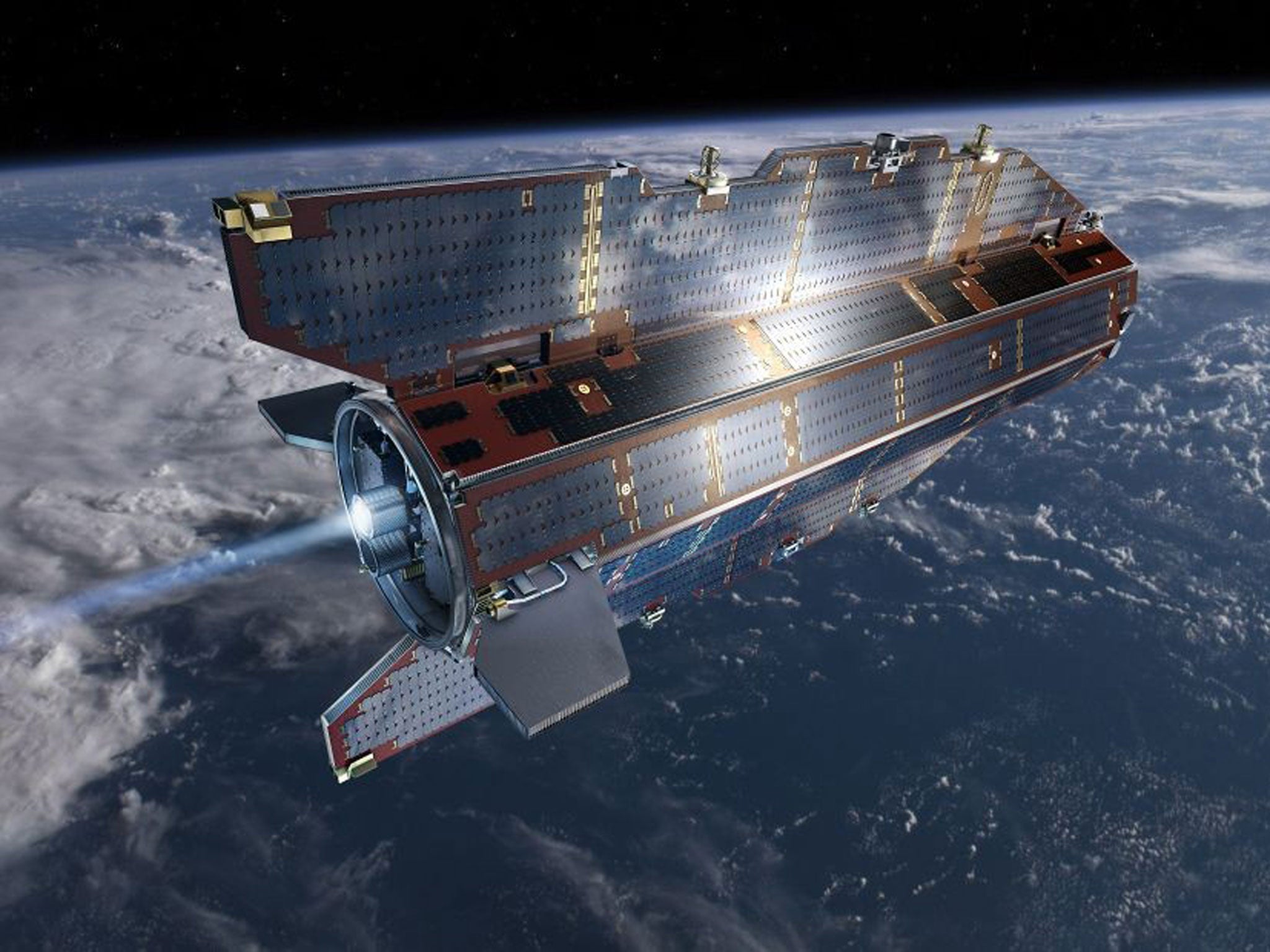One-tonne satellite hurtling towards earth - but don't panic just yet
Debris from the European Space Agency spacecraft is most likely to fall harmlessly in oceans

A one-tonne satellite spiralling towards the earth is expected to crash-land on Sunday evening or the early hours of Monday morning - but don't panic, the chances of being hit are infinitesimally small.
The European Space Agency (ESA) research satellite ran out of fuel in mid-October and has been slowly falling back to earth ever since from its original height of 139 miles.
On Saturday the satellite - official name Gravity field and steady-state Ocean Circulation Explorer (GOCE) - fell 8 miles and once it reaches an altitude of 50 miles it will break apart and four-fifths will burn in the atmosphere.
It’s expected that between 25 to 45 fragments of the spacecraft will survive the descent - what rocket scientists officially call an “uncontrolled re-entry”.
Parts of the satellite as heavy as 90kg could make it to the Earth’s surface, forming part of the 100 tonnes of material that is estimated to fall from space each year.
Professor Heiner Klinkrad, head of the ESA's Space Debris Office, stated on the agency's website that re-entry is expected to occur between Sunday 18:30 GMT and Monday 00:00 GMT.
He said: “In total since Sputnik was launched about 15,000 tonnes have returned from space, most of this burns as it re-enters the atmosphere due to aerothermal heating.”
The ESA has calculated that we are 250,000 times more likely to win the lottery than to get hit by space debris. On Sunday afternoon ESA said that debris was unlikely to fall on Europe.
Prof Klinkrad wrote on the ESA website: “The most probable impact ground swath runs over oceans and polar regions, as well as uninhabited areas of Australia.”
GOCE was launched in March 2009 to study changes in sea level, ocean circulation and the planet's gravitational field.
During its time in orbit the satellite has helped scientists to map variations in the Earth's gravity and create a high resolution map of the boundary between the Earth’s crust and its mantle. It was also used detect sound waves from the earthquake that struck Japan March 2011, acting as an airborne 'seismometer'.
Subscribe to Independent Premium to bookmark this article
Want to bookmark your favourite articles and stories to read or reference later? Start your Independent Premium subscription today.

Join our commenting forum
Join thought-provoking conversations, follow other Independent readers and see their replies